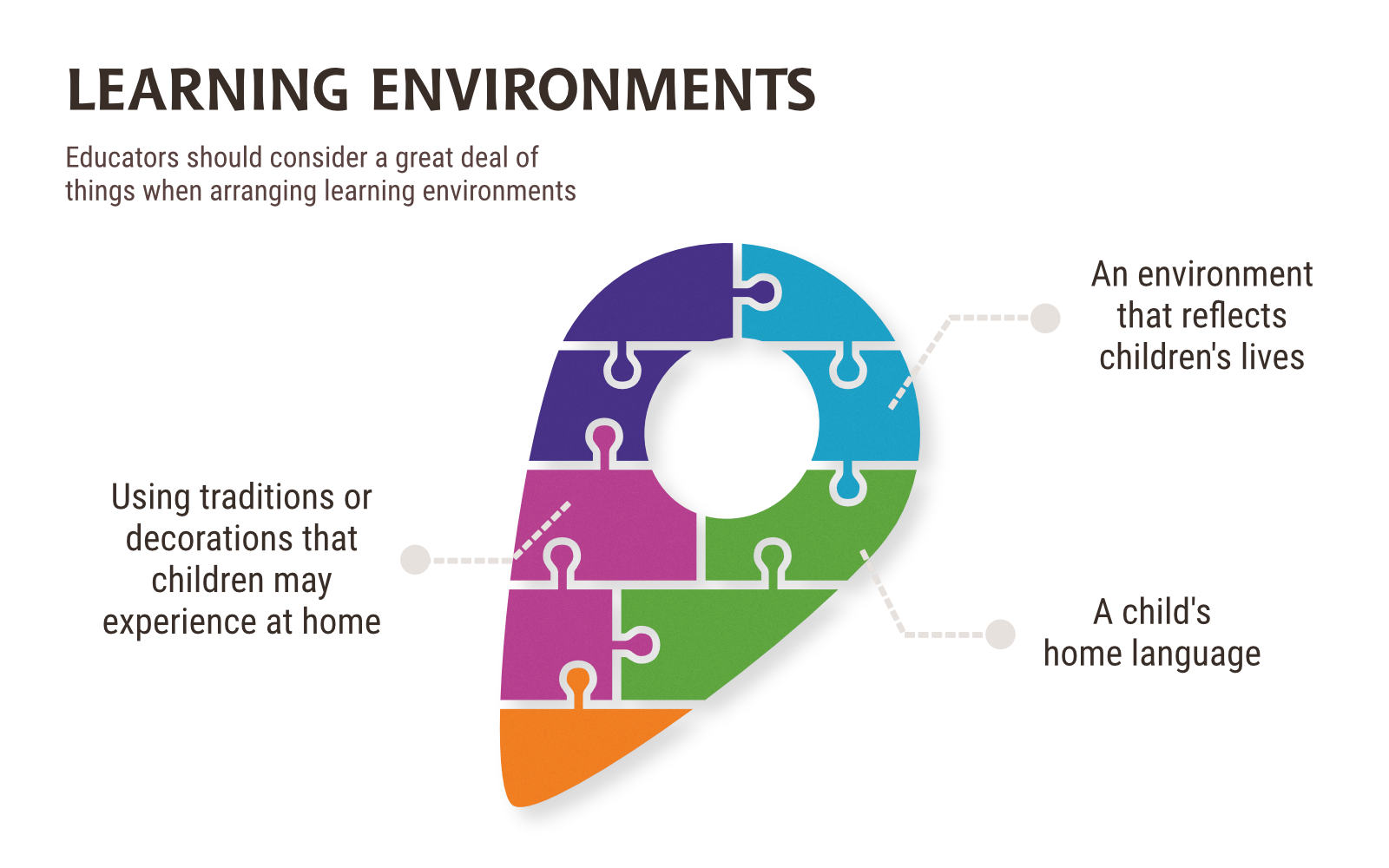04: Physical Environment for DAP
Universal Design for Learning (UDL)
As educators we need to know what is interesting to individual children to assess whether or not the materials are individually appropriate. Not all children will be interested in the same topics or activities. As educators we can think of creative ways to teach children. For example, think about how you teach the ABC’s, there are actually a variety of different ways. You can use letter blocks build, books to read, play dough to make letters, housekeeping props, (such as food containers that contain words), writing materials and songs to help children learn their ABC’s. Using multiple ways to present information to students is one of the basic principles of Universal Designs for Learning. Universal Design for Learning or UDL is a framework for creating curriculum and environments that meets the needs of all learners. All children can benefit from educators being flexible in the way we expect children to learn. Educators using UDL principles will provide multiple means of recognition, expression and engagement.

UDL is the basic assumption that there is no one size fits all learning. Using this idea, educators can plan, implement and assess activities and learning. UDL and DAP give educators a basis for the actual design of the space in the learning environment. Creating spaces for children that they enjoy and thrive in will make an educator’s job easier in the long run. When children are able to help themselves and make choices about how they are going to learn, children are more engaged and more likely to learn.
Learning Environments
Educators should consider a great deal of things when arranging learning environments.
If there appear to be loading issues, check out the interactive through the following links: more on environment, more on home language, more on traditions or decorations


